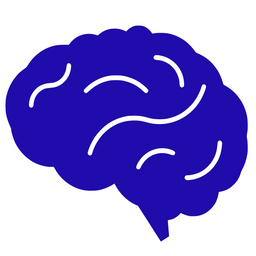We’ve all heard of it - NAPLAN - the ‘National Assessment Program: Literacy and Numeracy’. While the NAPLAN tests are often dreaded, it is important to understand what exactly they are and why they offer an important tool for students, parents and schools alike.
Table of Content:
What is NAPLAN?
NAPLAN is a government assessment program that tests students' literacy and numeracy skills across primary and secondary schools. Students are assessed every 2 years, in Years 3,5,7 and 9. The program was introduced by the government with the rationale that literacy and numeracy skills provide an important foundation for future study and everyday life skills that are required in the community and workforce - and to improve these skills, they must be assessed!
There are several tests that take place across the three days with each test focused on different skills: reading and writing, spelling and grammar (language conventions) and numeracy.
The content of each test is based on the nationwide English and Mathematics Australian Curriculum. It’s also worth noting that throughout 2022, NAPLAN is transitioning to a completely online mode of assessment, replacing paper tests entirely.
How are the tests structured?
Here’s a quick breakdown of how the tests are structured across the three days:
DAY 1
Language Conventions
- Year 3 and Year 5: 40 mins
- Year 7 and Year 9: 45 minutes
Language Conventions are designed to assess the student’s understanding of all things language: grammar, spelling, punctuation etc. Questions come in the form of multiple-choice or fill-in-the-blank.
Writing
- Year 3 and Year 5: 40 mins
- Year 7 and Year 9: 40 minutes
The writing test will prompt students to write a concise and original text (either creative or persuasive) in response to a given stimulus and question. Students are encouraged to plan their response in the planning space provided.
DAY 2
Reading
- Year 3 and Year 5: 45-50 mins
- Year 7 and Year 9: 65 minutes
The reading test is a comprehension-style assessment that assesses the ability to read, interpret and appropriately respond to a range of textual materials. Students are provided with a reading booklet that contains extracts of several text types that they will respond to in their answer booklet (containing both multiple-choice and short-answer questions).
DAY 3
Numeracy
- Year 3 and Year 5: 45-50 mins
- Year 7 and Year 9: Calculator 40 mins and Non-calculator 40 mins
The Numeracy test assesses students’ numeric and problem-solving skills when answering a range of multiple, choice, short answer and fill-in-the-blank style questions. In the later years, students will sit both the calculator and non-calculator tests.
Why is NAPLAN important?
Although NAPLAN might be criticised, the program has its benefits.
- It provides a valuable means to assess whether schools are achieving their learning and teaching objectives and facilitates comparison between schools and states throughout Australia.
- NAPLAN obviously also assesses students individually.
- First of all, it provides this nationwide comparison, allowing parents and teachers to know whether their child/ student is above or below the national mean.
- Secondly, since the assessments are completed across the course of 6 years, NAPLAN also provides an opportunity to assess student progress and development.
- Importantly, NAPLAN intends to provide transparency of results, in turn creating an accountability mechanism for the government and schools in how they allocate their teaching resources and achieve those objectives that we mentioned earlier.
- NAPLAN supports the improvement of teaching. Schools and students can monitor their progress against the national standard and identify their strengths and areas for improvement.
But at the end of the day, NAPLAN is only a snapshot with data taken from a few tests - it is only one measure of assessment and reporting that takes place during the school year.
Preparation tips
1. Do NOT place too much pressure on the NAPLAN assessments
NAPLAN was designed to assess the natural literacy and numeracy skills of students. While these skills can be practised and developed, students cannot ‘study’ for the exams because the content of the tests vary every year.
Do some NAPLAN practice papers to understand the format of the tests, but do not putt too much pressure on this! There is no way to fail the NAPLAN.
2. Improve on Skills in general
Completing little exercises that put literacy and numerical skills into practice is another valuable way to ‘prepare.’ The focus should be on improving these skills rather than actually ‘studying for NAPLAN’.
For example, students might be encouraged to sit down, plan and write a creative piece for 30-40 minutes - it doesn't have to be serious study but it will allow them to practise the literacy skills that the test will be assessing.
Conclusion
The NAPLAN is important in helping schools identify areas of weaknesses, but you do not have to put any additional pressure on your child to 'do well' in the NAPLAN test. It’s also worth remembering that schools will inherently be teaching students these required skills, so it is not overly necessary to rigorously prepare for these tests. For more resources and NAPLAN advice, check out these articles:



FAQs
What is New or Different about NAPLAN in 2026?
- Fully online assessment for Years 5, 7, and 9.
- Earlier test date, faster marking and reporting, and more targeted feedback and intervention.
- Schools can opt in for additional sample assessments in science literacy and civics (Years 6 and 10).
Where can I find more resources about NAPLAN?
- Online sample tests: ACARA demo site, school platforms, tutoring sites, including past papers for all year levels.
- Parent guides and FAQs on the National Assessment Program website, state education portals, and school communications.
Want more personalized study guidance to help support you or your child's learning? A private tutor from KIS Academics can make the biggest difference!
Let us find the perfect match for you and your child.
What Our Students & Parents Say
600+ Five-Star reviews across all our tutoring programs — hear why below !👇







